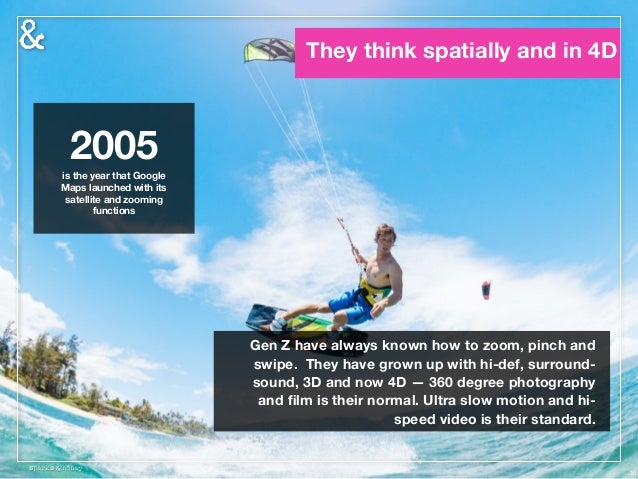iPhone Headphones Tricks
14 things you didn’t know your iPhone headphones could do
…including forwarding calls to voicemail and putting calls on hold.
http://www.businessinsider.com/iphone-headphones-tricks-2015-2
Digital Literacy for St. Cloud State University
…including forwarding calls to voicemail and putting calls on hold.
http://www.businessinsider.com/iphone-headphones-tricks-2015-2
Volume, Velocity, Variety
Business Intelligence
Internet of Things
privacy, security, intellectual property
mobile Internet
Another step ahead/afar from CMS?
Koondis works in traditional large introductory lecture classrooms, blended classes and fully online courses that often are filled with students enrolled from various disciplines who are required to be there for their majors.
Described as a “social homework system,” a “discussion forum that puts students in small groups” and even a replacement for the campus learning management system, Koondis is showing great promise as a pill for student satisfaction.
The idea is that Koondis eliminates the need for teachers to read all of the posts. The program even counts posts for the instructor for grading purposes, and alerts the faculty member to do follow-up when a student isn’t participating.
library approach to information literacy. or WHAT IS information literacy?
is it the 90-ish notion of standing up in front of bored class and lecturing them how important is to use the online databases, which the university subscribe for
52% of teens use YouTube or other Social Media sites for a typical research assignment in school:
slide 29 out of 56:
Infographic from:
Should information literacy be about digital literacy? Geo-spatial knowledge?

Should information literacy include videos? Games?
Should information literacy be multiliteracy? Transliteracy?
https://blog.stcloudstate.edu/ims/2014/11/27/scholarly-communication-and-information-literacy/
This is what Gen Z will expect from information literacy in particular, from library and education in general:
https://www.youtube.com/watch?feature=player_detailpage&v=h11u3vtcpaY#t=314
http://synaptogaming.com/2013/04/11/what-would-vygotsky-have-thought-of-play-station-4/
https://prezi.com/yactlqywndbo/piaget-vs-vygotsky/

HTTP/2 will enable faster page loads, it is binary instead of textual (more efficient and less error-prone), it is fully multiplexed (to improve network performance), uses header compression and ‘Server Push’ (to reduce overhead).
Google has announced its plans to adopt HTTP/2 for Chrome and we also know that Microsoft’s Project Spartan has built-in support for the new standard.
If you are a web developer you can already test HTTP/2 in Firefox and Chrome with a few downloadable test servers. More information on that can be found here.
from http://www.neowin.net/news/http2-standard-has-been-finalized-paving-the-way-for-a-faster-web

“Dreamscape,” courtesy of Jimmy Williams, shows how Photoshop can be used to create fantastical landscapes. But the program’s inventors note that photo manipulation predated Photoshop.
See the full story here:
Last year, it took a group of hackers to decode some old tape decks from a lunar orbiter mission run in the 1960s — as Wired points out, “the drives had to be rebuilt and in some cases completely re-engineered using instruction manuals or the advice of people who used to service them, and “the data they recovered then had to be demodulated and digitized, which added more layers of technical difficulties.”
take an X-ray picture of everything that is in place — not just the picture bits, but the operating system bits and the application bits and the underlying machine description bits — and we take this X-ray image and we package it all up and hang onto that, put it wherever we need to, maybe multiple copies, hoping one of them will last maybe a period of time. So this snapshot idea is quite clever and it captures everything you need to know to reproduce the environment to interpret the picture. And that object, this digital object, is something that could be transported around [from one cloud to another cloud or another machine].
http://hightechfriday.blogspot.com/2015/02/using-tech4learning-rubrics-with.html?m=1
More on rubrics in other IMS blog entries:
https://blog.stcloudstate.edu/ims/?s=rubrics
College students love snapchat!It’s personal, creative, quick, fun, and free. |
“According to research by Sumpto…as much as 77 percent of college students use Snapchat every day.
37 percent of the study respondents cited “creativity” as their main use of the app. “Keeping in touch” and “easier than texting” were reasons for 27 percent and 23 percent, respectively.”
Reasons young adults ages 18-26 use snapchat:
Colleges are also starting to get on the bandwagon — Snapchat launched Our Campus Story in October 2014 to four schools.
How Colleges are using snapchat:
Read more:
http://www.businessinsider.com/why-millennials-use-snapchat-2015-2
http://sproutsocial.com/insights/how-to-use-snapchat-for-colleges/
http://www.briansolis.com/2015/02/npr-marketplace-snapchat-19-billion-company/
More IMS blog entries on Snapchat and its use in education:
https://blog.stcloudstate.edu/ims/?s=snapchat
Robbins, S. P., & Singer, J. B. (2014). From the editor—The medium is the message: Integrating social media and social work education. Journal Of Social Work Education, 50(3), 387-390.
Waxman, O. B. (2014). Snapchat Grows Up: How College Officials Are Using the App. Time.Com, 1.
JO, M. (2014, March 22). Teacher sees value in online connection. Dominion Post, The. p. A2.
Stretton, T., & Aaron, L. (2015). Feature: The dangers in our trail of digital breadcrumbs. Computer Fraud & Security, 201513-15. doi:10.1016/S1361-3723(15)70006-0
YOUNG, D. (2014). NOW YOU SEE IT, NOW YOU DON’T… OR DO YOU?: SNAPCHAT’S DECEPTIVE PROMOTION OF VANISHING MESSAGES VIOLATES FEDERAL TRADE COMMISSION REGULATIONS. Journal Of Information Technology & Privacy Law, 30(4), 827.
http://login.libproxy.stcloudstate.edu/login?qurl=http%3a%2f%2fsearch.ebscohost.com%2flogin.aspx%3fdirect%3dtrue%26db%3dedo%26AN%3d97348107%26site%3deds-live%26scope%3dsite
Ekman, U. (2015). Complexity of the ephemeral – snap video chats. Empedocles: European Journal For The Philosophy Of Communication, 5(1/2), 97-101. doi:10.1386/ejpc.5.1-2.97_1
Flandez, R., & Wallace, N. (2014). Nonprofits Must Guard Against Imposters. Chronicle Of Philanthropy, (09),
O’Neil, M. (2014). Oh, Snap! A Q&A With DoSomething.org’s Snapchat Strategists. Chronicle Of Philanthropy, (01),
MESSITT, M. (2014). Cyberbullying Happens in Code. Break It. Education Digest, 79(9), 51.